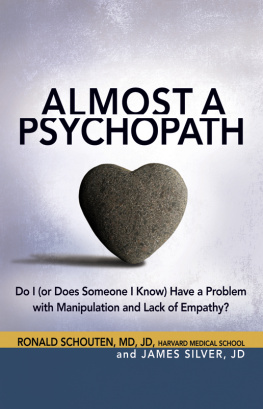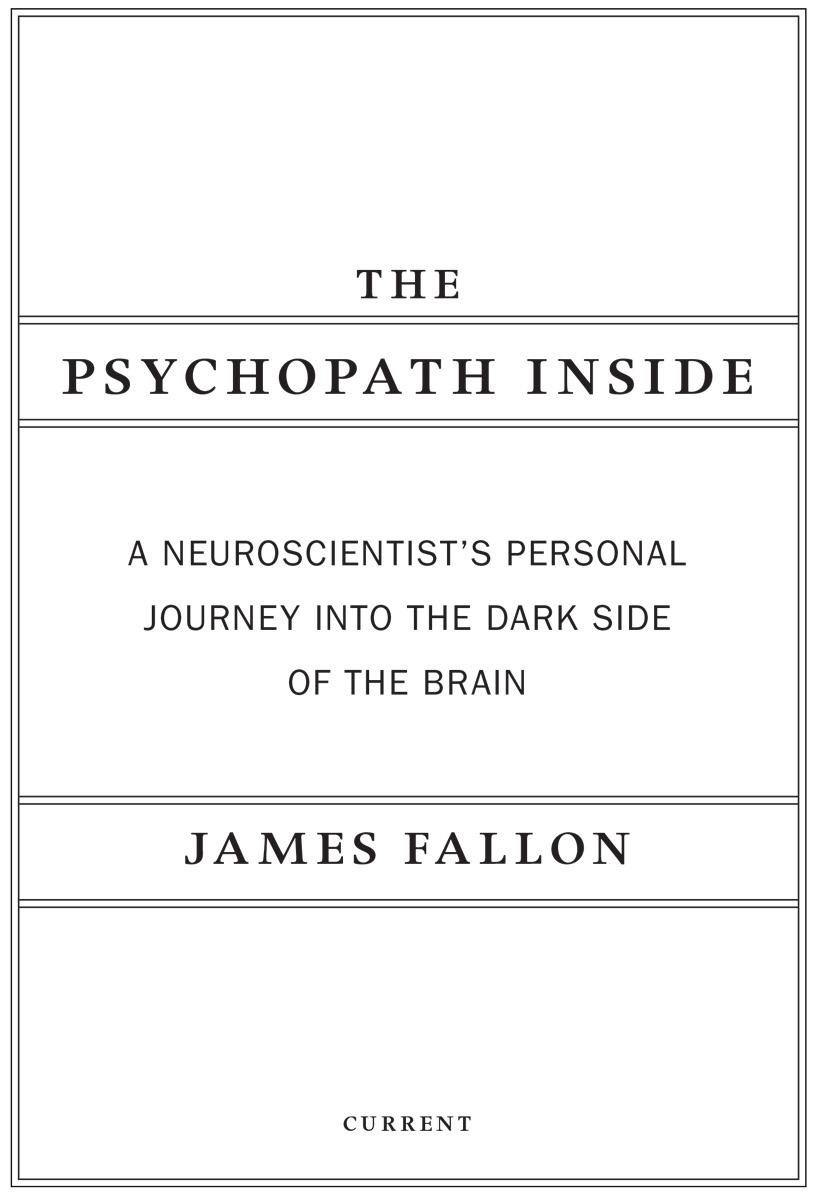James Fallon - The Psychopath Inside: A Neuroscientists Personal Journey into the Dark Side of the Brain
Here you can read online James Fallon - The Psychopath Inside: A Neuroscientists Personal Journey into the Dark Side of the Brain full text of the book (entire story) in english for free. Download pdf and epub, get meaning, cover and reviews about this ebook. year: 2013, publisher: Current Hardcover, genre: Religion. Description of the work, (preface) as well as reviews are available. Best literature library LitArk.com created for fans of good reading and offers a wide selection of genres:
Romance novel
Science fiction
Adventure
Detective
Science
History
Home and family
Prose
Art
Politics
Computer
Non-fiction
Religion
Business
Children
Humor
Choose a favorite category and find really read worthwhile books. Enjoy immersion in the world of imagination, feel the emotions of the characters or learn something new for yourself, make an fascinating discovery.
- Book:The Psychopath Inside: A Neuroscientists Personal Journey into the Dark Side of the Brain
- Author:
- Publisher:Current Hardcover
- Genre:
- Year:2013
- Rating:4 / 5
- Favourites:Add to favourites
- Your mark:
The Psychopath Inside: A Neuroscientists Personal Journey into the Dark Side of the Brain: summary, description and annotation
We offer to read an annotation, description, summary or preface (depends on what the author of the book "The Psychopath Inside: A Neuroscientists Personal Journey into the Dark Side of the Brain" wrote himself). If you haven't found the necessary information about the book — write in the comments, we will try to find it.
For the first fifty-eight years of his life James Fallon was by all appearances a normal guy. A successful neuroscientist and medical school professor, hed been raised in a loving, supportive family, married his high school sweetheart, and had three kids and lots of friends.
Then he learned a shocking truth that would not only disrupt his personal and professional life, but would lead him to question the very nature of his own identity.
The Psychopath Inside tells the fascinating story of Fallons reaction to the discovery that he has the brain of a psychopath. While researching serial murderers, he uncovered a distinct neurological pattern in their brain scans that helped explain their cold and violent behavior. A few months later he learned that he was descended from a family with a long line of murderers which confirmed that Fallons own brain pattern wasnt a fluke.
As a scientist convinced that humans are shaped by their genetics, Fallon set out to reconcile the truth about his brain with everything he knew about the mind, behavior, and the influence of nature vs. nurture on our personalities. How could he, a successful scientist and a happy family man with no history of violence, be a psychopath? How much did his biology influence his behavior? Was he capable of some of the gruesome atrocities perpetrated by the serial killers he had studied?
Combining his personal experience with scientific analysis, Fallon shares his journey and the discoveries that ultimately led him to understand that, despite everything science can teach us, humans are even more complex than we can imagine.
James Fallon: author's other books
Who wrote The Psychopath Inside: A Neuroscientists Personal Journey into the Dark Side of the Brain? Find out the surname, the name of the author of the book and a list of all author's works by series.












